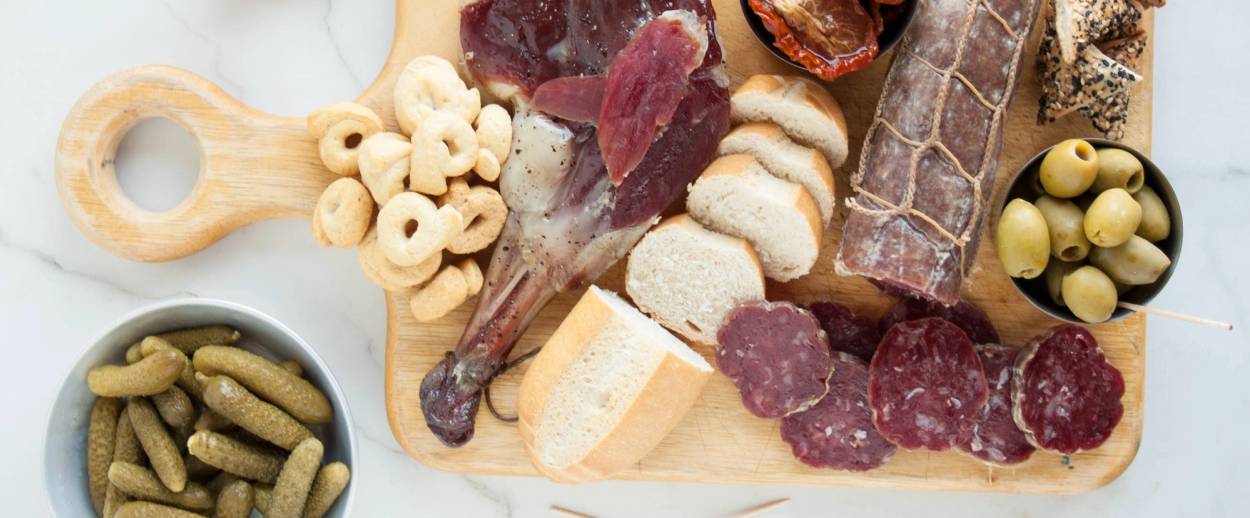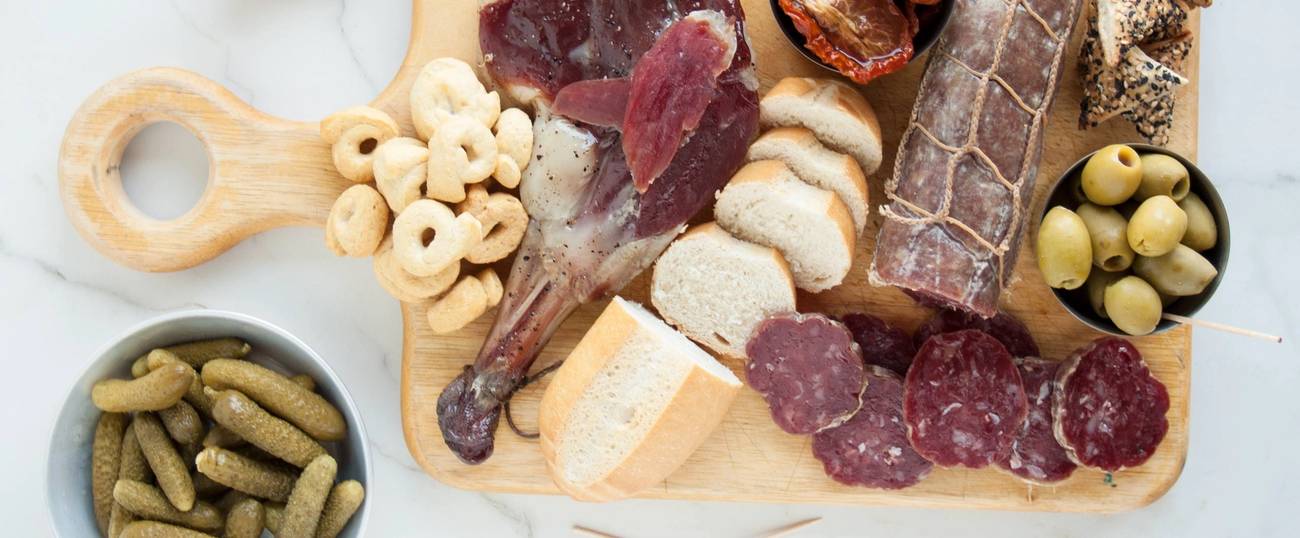How to Make Kosher Prosciutto
The Jews of Italy used goose instead of pork to make their distinctive charcuterie




Somewhere in the countryside outside Milan, in an abandoned farm owned by my family, I’m raising geese. It’s a rather bizarre activity for a city girl like me, but one that will allow me to keep alive an ancient tradition of the Jews of northern Italy: producing homemade kosher charcuterie out of goose meat.
I’m raising my own geese because getting one’s hands on kosher goose meat in Italy is pretty complicated: The meat has to be ordered from France, takes forever to arrive, and costs an indecent amount of money. Even in nonkosher supermarkets and butchers, the humble goose is hard to find, and that’s for the simple reason that nobody cooks goose—kosher or not—at home these days. Most households prefer beef, lamb, and chicken, as they are easily available, conveniently portioned, and simple to cook.
However, this hasn’t always been the case in Italy. Food preferences have shifted over time. All over Lombardia and Veneto, northern regions whose humid environment makes raising geese an obvious choice, farmers and butchers have produced prosciutto and salami from goose for generations. What most people ignore is that it was the local Jewish population who came up with the idea to use goose to prepare delicacies that were otherwise normally made with pork.
In the late Middle Ages and during the Renaissance, many Jews who were fleeing persecution from all over Europe resettled in northern Italy, especially in the cities of Venice, Ferrara, Mantova, and Pavia, and their dietary restrictions ended up influencing the local cuisine. Since pork was banned by Jewish laws of kashrut, Jews started commissioning the local butchers to create some special kosher charcuterie made only from goose, an animal that was commonly farmed all over the region. These “goose-only” cold cuts and cured meats were produced and sold very successfully until shortly after the expulsion of the Jews from the Duchy of Milan in 1597, when Christian butchers reintroduced pork into the mix to make their products less expensive.
Today, finding charcuterie made from goose is nearly impossible. There are a couple of places in Italy that still produce what they call “ecumenical salami,” appreciated mostly by the Muslim population, and some goose prosciutto with the old Jewish recipe (unfortunately not kosher-certified), but these precious and ancient Jewish specialties are on the verge of disappearance. The Jewish communities of Italy are slowly disappearing, their population is aging, and there isn’t much interest in preserving the local culinary history.
I learned my way around goose meat from Anna Campos, one of the last remaining custodians of the tradition. Campos heads the Venetian chapter of the Women’s International Zionist Organization, and feels strongly about preserving the Jewish culture of her hometown. Venice has been home to a lively Jewish community for hundreds of years, but its outlook is rather grim: The Jewish population shrank from 5,000 in the 17th century to 1,200 by the outbreak of WWII, and today there are about 450 Venetian Jews left. Campos is one of the few people left in town who still cherishes the old customs and knows how important it is to pass them on to the next generation. That’s why she gathered a small group of people eager to learn the art of kosher salami-making in the community center of Venice, where I met her.
Campos explained to us that geese—locally nicknamed “the pork of the Jews”—have historically been exploited thoroughly for their culinary potential: Not the smallest bit of the precious animals would go to waste. Legs and breasts would be seasoned with allspice, placed in stone containers, and covered in salt to make prosciutto. Smaller in size than their nonkosher counterparts, kosher prosciuttos were dried and seasoned for a relatively short time; they would traditionally be prepared around Hanukkah and kept in a cellar for three to four months, to be served right on time for Passover. With breasts and legs allocated to prosciutto, most of the remaining meat and part of the fat would be ground and stuffed into the skin of the neck of the goose (or, even more intimidatingly, inside the esophagus), to make a salami.
There are different types of kosher goose salami, depending on the region of origin: Some are simply dried, others are cooked. Luganegotti (which should not be confused with a pork sausage called luganega, also produced in the area) are the typical Jewish Venetian dried salami and they are a prized good, because almost nobody these days sets out to prepare them. When you visit the ghetto, you can chat with many people who remember nostalgically the luganegotti that their grandma used to make, but would never summon the courage to actually try stuffing their own at home. Luganegotti, however, are not the only salami made of goose in northern Italy. In other parts of the country, such as the city of Mortara, known for its production of charcuterie, goose salami are first boiled and then cured, a process that yields a softer, less chewy end product. Lastly, the leftover bits of goose fat and skin would be fried together to make gribole, a specialty that was probably imported to northern Italy in the late 13th century by Ashkenazi Jews who fled persecution in Central and Eastern Europe; it doesn’t take a philologist to figure that gribole must have been the the local version of what in America is called gribenes.
I have documented the procedure to produce some of these specialties (prosciutto recipe here), in the hope that more people will be interested in trying them at home and keeping up the tradition. If you have never carved a whole raw goose and sewn the skin of a fowl with your own two hands, please give it a try. I know it’s not for the faint of heart, but it will help us preserve an ancient Jewish craft. Besides, it will certainly be one of the most bizarre stories you will tell your grandchildren one day.
Benedetta Jasmine Guetta is a food writer and photographer based in Milan. She runs Labna, the only Jewish/kosher cooking blog in Italy, specializing in Italian and Jewish recipes. Her latest book is Cooking alla Giudia.